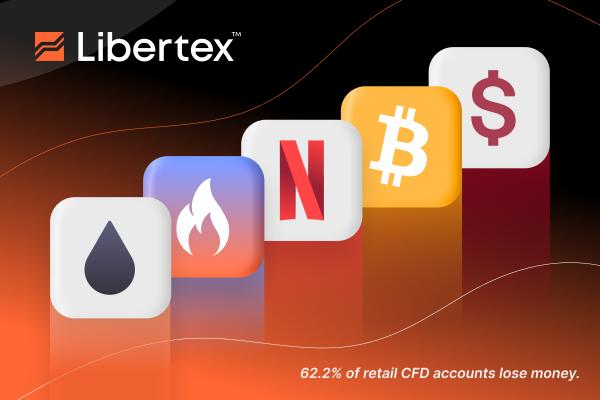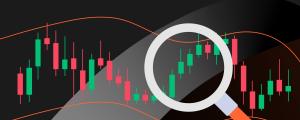With the world economy in the grip of an inflationary crisis and teetering on the brink of recession, many risk assets have either declined steadily or found themselves stuck in a sideways loop for much of the past year. Since there’s little money to be made in motionless markets, traders and investors everywhere are naturally interested in which instruments have been able to buck the stagnatory trend in 2022 to post notable gains (or losses) over this period.
With this in mind, we decided to put together a shortlist of 2022’s biggest movers in either direction. Let’s look at a range of different asset classes to identify a selection of volatile but also liquid and sufficiently mainstream instruments.
ExxonMobil (XOM)
Our first pick is a stock, but it’s definitely not what you’d think of as a trendy or fashionable one. ExxonMobil might have only been incorporated in 1999, but it’s actually a direct descendant of JD Rockerfeller’s Standard Oil and ranks as one of the world’s Top 5 biggest oil companies. Anyone with a car will tell you that petrol prices have seen some of their largest ever increases over the past 6-12 months as political instability and price manipulation by oil-producing nations have made this staple fuel a luxury of late.
But while Brent oil has risen by around 45% YTD, ExxonMobil has managed to outperform its main product by some margin. In fact, XOM has been able to post gains of close to 55% since January 2022 – and it’s much, much easier to buy and sell than physical oil. With no end in sight to the fuel crisis and winter fast approaching, ExxonMobil could still have a way to go.
USD
This next instrument might seem like a bit of a tame choice, but anybody who has been studying the Forex market this year will have to admit that the US dollar’s performance has been nothing short of spectacular in 2022. A perfect storm of economic uncertainty, rising US Treasury bond yields and increased demand for dollar-denominated commodities have pushed the greenback so high that it has reached a historic parity level with the European single currency unseen since 2002.
This represents a 12% gain YTD against the euro in real terms, which might not seem spectacular, but for a fiat currency, that’s practically unheard of. To put things into perspective, this means that investors who went to cash in late 2021 would have been able to come out slightly ahead of inflation without actually doing anything! It just goes to show that USD really does deserve its status as a safe haven, perhaps the most liquid one there is.
Gas (Henry Hub)
We’ve already touched upon the volatility of energy commodities this year, so it’s only right we include one in this list, even if they are less popular than other instruments. Henry Hub Natural has absolutely blown oil out of the water, gaining almost 300% since January 2021 and nearly 100% since July to reach a current spot price of 9.75 (31/08/2022).
Many people associate natural gas with the winter season, and while home heating is definitely a major source of demand for the energy resource, it also has a quite significant year-round role in electricity generation. Indeed, a large portion of non-renewable electricity is now produced using natural gas as it is one of the greenest fossil fuel options available. With demand projected to increase over the coming months and no end to the supply-side problems in sight, the case for further price rises is a strong one.
Bitcoin (BTC)
Now that we’ve looked at some of the biggest gainers of 2022 so far, let’s move on to the largest losers. After all, when you have the option to go both long and short (as is the case with Libertex’s CFD offering), all that matters is movement. The direction is unimportant. Bitcoin dominated headlines in 2021 and was dubbed a generational opportunity in November when prices were within touching distance of $70,000.
A lot has changed since then…and that’s putting it mildly. The original currency has been in practical freefall since the final month of 2021 and is now down 70% from its all-time high. Many called the bubble last year, and this would have been an excellent earning opportunity for short sellers. The question now is: has Bitcoin found a bottom, and could current levels represent a favourable buying opportunity, or is there more downside ahead?
Netflix (NFLX)
We started on a stock and so thought it fitting to end on one, too. Despite sharing an asset class, however, these two equities couldn’t be more different. After shooting to fame as the quintessential entertainment streaming service, Netflix has become more than just a household name over its 25-year history. A predictable uptick in subscriptions during the global lockdowns, coupled with the company’s ambitious strategy of becoming one of the biggest movie studios in the US, saw this stock’s price explode in 2020-21 to reach a massive $690 ATH.
But as is often the case with unbridled passion and enthusiasm, the fall back to Earth was a rough one. As of today, Netflix has lost almost 70% since its November 2021 peak to a current level of $223.56. That said, it did fall as low as $175.50 and appears to have now consolidated above $200. Could this mean that the worst is behind the streaming giant? It certainly looks like a good long-term buy and hold at these prices, but its shorter-term trajectory is less clear.
Trade volatile CFDs with Libertex
Libertex is an online trading platform with a lot of years of experience under its belt. Because we allow our users to trade a vast array of CFD instruments, both long and short, Libertex clients are able to take potential advantage of any movement, whether positive or negative. With tight spreads and competitive commission rates, Libertex is constantly trying to give you that little bit extra. So, whether you think the market is headed up or down, with Libertex, you can trade both ways.
For more information or to create a trading account, visit https://libertex.com/signup
Risk Warning: CFDs are complex instruments and come with a high risk of losing money rapidly due to leverage. 62.2% of retail investor accounts lose money when trading CFDs with this provider. Tight spreads apply. Please check our spreads on the platform. Available for retail clients on the Libertex Trading Platform. You should consider whether you understand how CFDs work and whether you can afford to take the high risk of losing your money.


